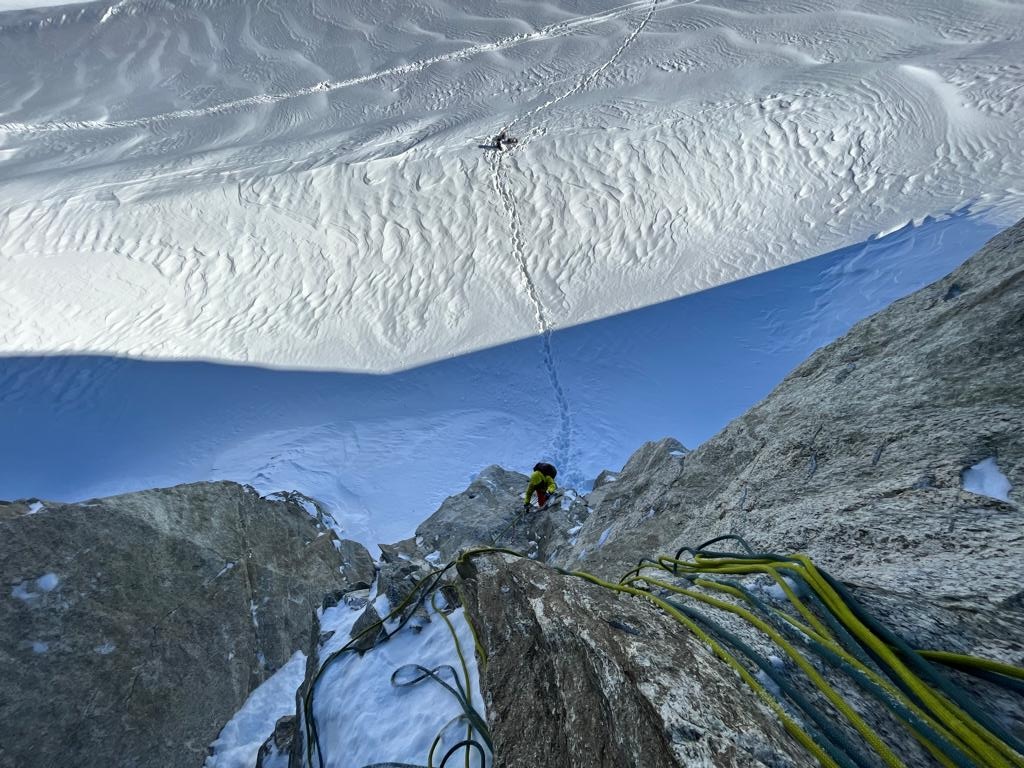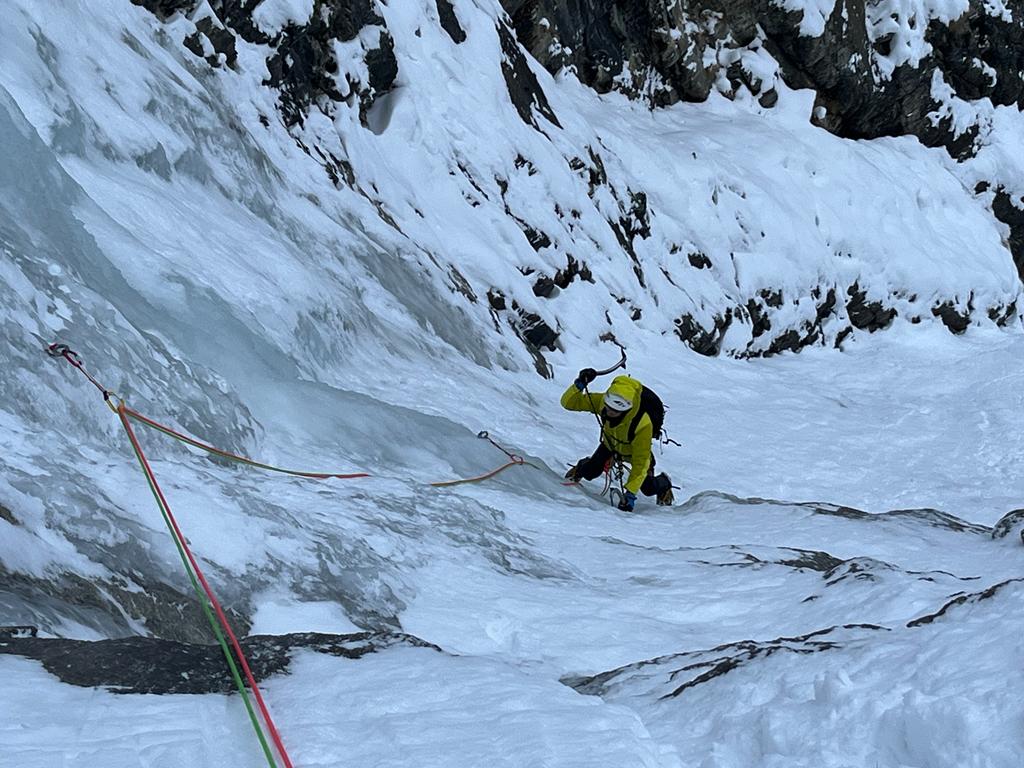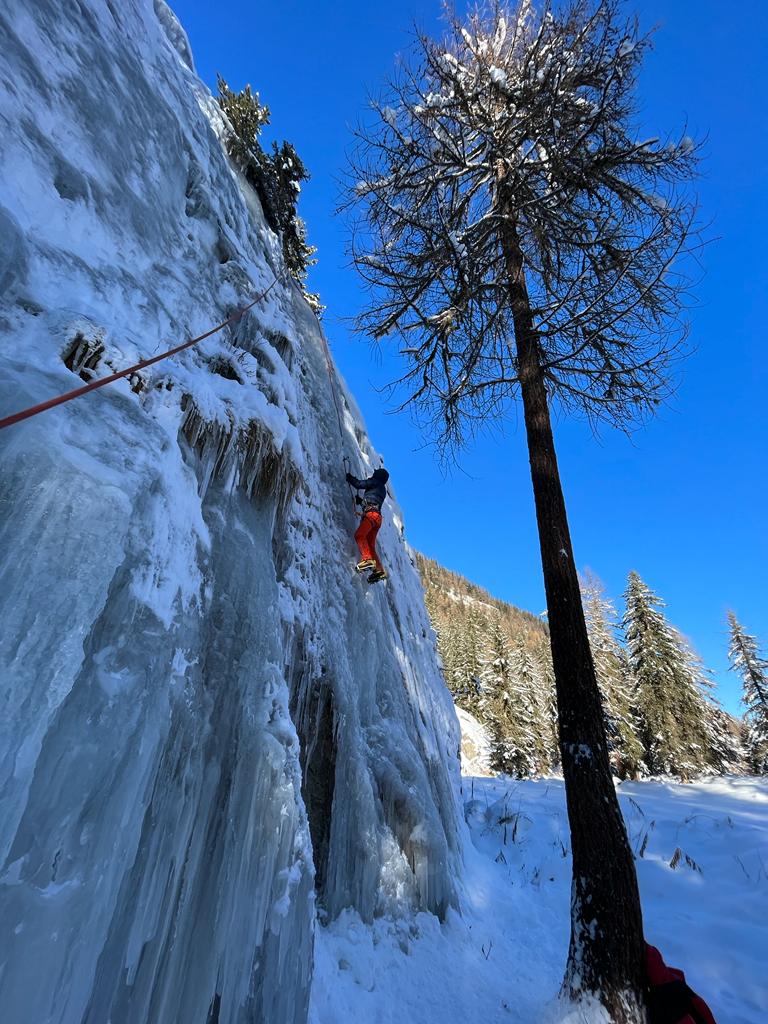A disclaimer: An amateur is simply someone who partakes in an activity for reasons other than as a source of income. It in no way reflects relative ability; amateurs can and often do outperform pros, at least in the Indian context. An amateur simply achieves that while balancing other responsibilities, such as work and family, while pros give their all to their activity.
What is ice climbing? Well, ice climbing involves climbing ice, just as one climbs rock in rock-climbing. The emphasis here is on ice climbing because one needs to understand what climbing is before trying to understand ice climbing.
Classical mountaineering is distinct from ice climbing (or rock climbing or modern alpinism), where, in the former, the means or style of climbing is secondary to reaching the summit. It is for this reason that the Everest industry has been flourishing since the last few decades, and visually blind and double amputees have also summitted (which to me is a huge accomplishment). “Climbing” Everest by the typical mountaineer does not involve actual climbing of the mountain for the most part (or for any part); guided climbs, which cover pretty much or all of Everest climbing today, involves climbing a fixed rope using ascenders (Jumaar); basically, jugging or hauling oneself up a rope pre-fixed by someone else (the Sherpa). Or cutting steps on steep ice to render the technical challenges easier; this was the style Tenzong Norgay and Edmund Hillary employed, given the technology, type of crampons, and ice axes that existed then. Ice climbing by contrast, involves actually climbing ice using one’s own ability (called “free-climbing”), and using rope and gear only for protection in case of a fall, not to assist in climbing. The technical difficulty and aesthetics of the climb are what drives ice-climbing; summiting the mountain, if any is secondary. Altering the route by cutting steps or fixing ropes defeats the whole point (barring exceptions).

Having hopefully understood what “climbing” is, (a meaning consistent with modern climbing nomenclature), let’s try and understand what “ice” is. Well, as an IIT-ian, you know ice is simply water that is frozen, a no––brainer, right? Well, ice climbing actually involves two very different types of ice: water-ice and alpine ice, each of very different character.

Water ice is a flowing water stream that slowly freezes during the winter. It does not exist year-round but typically forms in early-December and stays through February end in the Alps and Himalaya (add a month on either side if you are referring to the Canadian Rockies; in some shaded or high altitude spots, you could climb it as late as early April). Water ice is hard (hard as in a hardness test, as well as hard as in difficult to climb). For one, because it is typically steep, upward 70 degrees to vertical and even overhanging, and for two, because it is so hard, you have to swing your ice tools and crampons hard multiple times to penetrate it and get a bite 2-5 mm deep. A rock-climbing analogy of it would be bouldering, a hard problem; a running analogy would be a 100 metres dash or hurdles; short and intense. You can often find water ice a hundred metres from the parking lot. It does not require much aerobic fitness. Of course, this applies to easily accessible single-pitch ice (no more than 40 metres long); there are some classic multi-pitch lines that run several hundred metres long.

Alpine ice is compacted snow. As the snow accumulating on a steep face undergoes cycles of thaw and freeze, and the pressure of layers of snow on top of it results in dense, crunchy ice that is nicely bound to the rock wall on which it rests; that’s alpine ice. Alpine ice is much softer and more plastic than water ice, and a single swing of the axe can bite an inch deep. The angles are much less steep, more like 45 to 70 degrees (remember, snow wouldn’t stick on vertical faces), and the climbing is much easier than water ice. The challenge of alpine ice lies in the exposure to elements and the length of the routes; alpine ice is typically climbed as part of classic routes, such as the classic North faces of the Alps, Below is a picture of the North Face of Tour Ronde that I climbed in 2011. A rock-climbing analogy of it would be climbing a long multi-pitch route; a running analogy would be a trail ultramarathon.

Having understood the basics of ice climbing, let me cover how a typical ice climbing trip in the Alps would look, from the perspective of a middle-aged academic who works close to what Mr. NRN Murthy infamously recommended (I completely disagree with the idea of slogging for 70 hours for a company, but that’s another matter). In a nutshell, I get 10x more technical climbing done in the time it takes to simply travel and acclimatize before beginning to climb in the Himalayas. Hence, it works for me.
